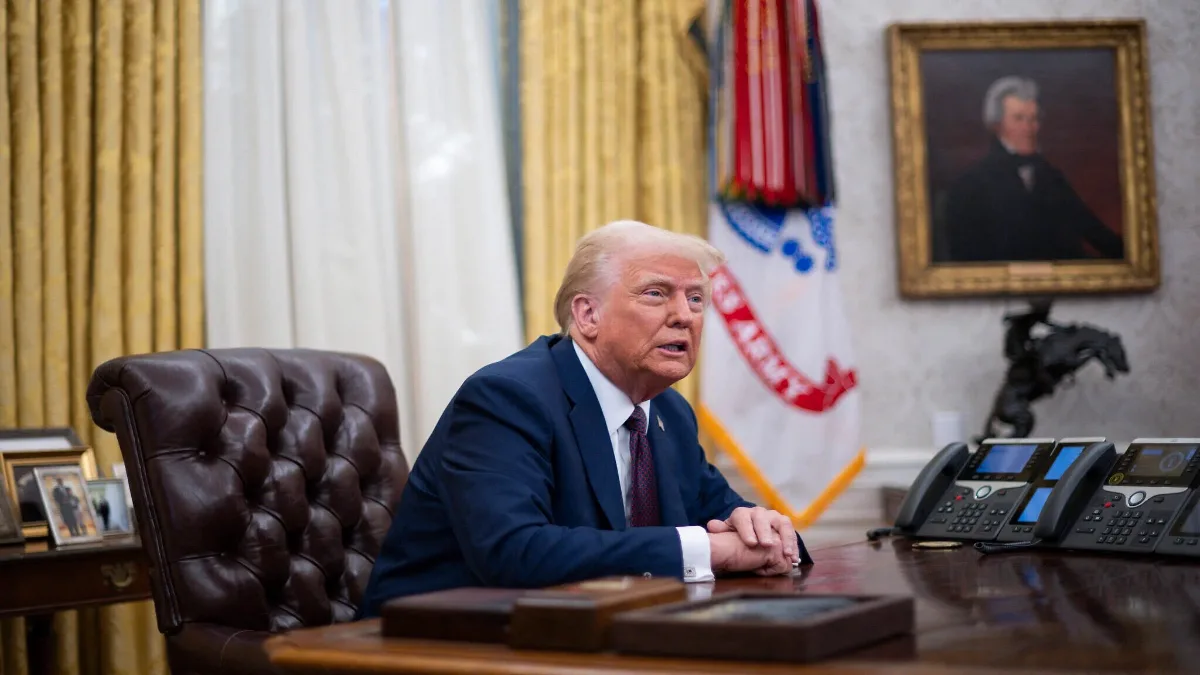
American President Donald Trump has brought America’s wind energy industry to a standstill, causing developers to delay projects and write down the value of investments. Trump’s administration has paused federal permits and leasing for wind projects both on land and at sea, leaving plans in limbo.
Fierce Criticism of Offshore Wind Projects
During his campaign, Trump fiercely criticized offshore wind projects and promised to “end them on day one.” In a recent rally, he reiterated, “We aren’t going to do the wind thing,” while twirling a finger to mimic the rotation of a turbine blade. Trump argued, “Big ugly windmills, they ruin your neighborhood.”
Major Developers Affected by Trump’s Orders
Since the election, major developers like TotalEnergies, Shell, and Orsted have faced significant setbacks. TotalEnergies shelved a planned offshore wind energy development for four years. Shell took a $1 billion impairment, more than half of which was for an offshore wind project. Orsted recorded a $1.7 billion impairment on its U.S. offshore wind business and slashed its capital investment plans through 2030 by a quarter.
Industry Confusion and Federal Permitting
Work continues on projects that had already started construction, but confusion about future developments has overtaken the industry. Developers are awaiting clarification on several fronts, including permits from the Army Corps of Engineers, U.S. Fish and Wildlife, and the Federal Aviation Administration. Scott Wilmot, senior analyst at Enverus Intelligence Research, said, “Developers are awaiting clarification on a number of fronts.”
The Controversial Lava Ridge Wind Project
One project that has come under intense scrutiny is the Lava Ridge Wind Project in Idaho. Sen. Jim Risch (R., Idaho) pushed for its halt, and Trump included a temporary stop of this project in his executive orders. The project, located near a historic World War II internment camp for Japanese-Americans, faces fierce local opposition. Risch said he discussed the halt with Trump a week before the inauguration, stating, “He gets it. It’s not a hard lift because he shares my reticence about windmills.”
Wind Energy’s Economic Contribution
Wind accounted for about 10% of large-scale U.S. electricity generation in 2023, according to the Energy Information Administration. Despite ongoing projects, the industry is also concerned about potential cuts to tax credits included in the 2022 Inflation Reduction Act. Trump has called the IRA a scam and seeks to roll back environmental rules.
Challenges Beyond the Trump Administration
The wind-energy sector faced challenges even before Trump’s executive orders. Global supply-chain issues, rising interest rates, and inflationary pressures have made projects more expensive to build in recent years. Despite these hurdles, the industry hopes for clarity and the continuation of projects under construction. David Hindman, head of power, utilities renewables at AlixPartners, said, “All parties—developers, financers, others—are going to want to have more certainty than we have now.”

